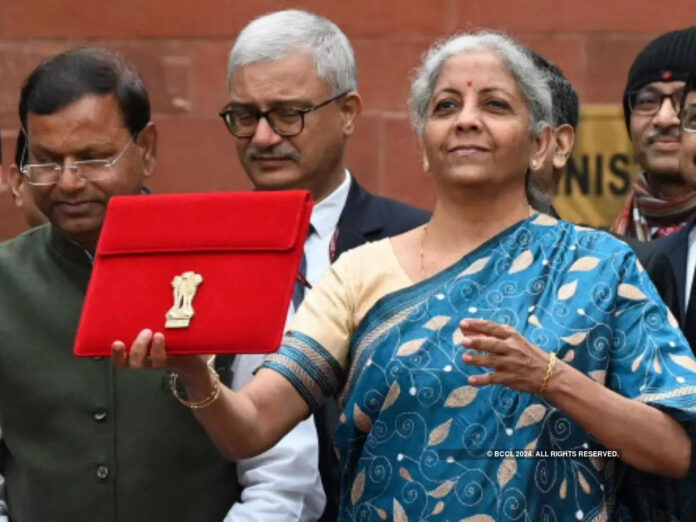At its core, a budget, whether for a household or a government, operates on the same principle: balancing expenditures with income. However, a significant distinction exists. Governments possess the sovereign authority to print money, a power not available to households. For Finance Minister Nirmala Sitharaman, crafting India’s budget is a complex balancing act that goes far beyond simple arithmetic. It involves navigating a myriad of economic, social, and political challenges, making her task far more daunting than it appears.
The Macroeconomic Context
India’s economy, like many others, has faced significant disruptions in recent years due to the COVID-19 pandemic. While the nation is on the path to recovery, the scars left by the pandemic are still evident. Unemployment rates remain high, businesses are still rebounding, and inflationary pressures are mounting. Sitharaman’s budget must address these immediate concerns while laying the groundwork for sustainable long-term growth.
Inflation and Monetary Policy
One of the primary challenges for Sitharaman is managing inflation. Rising prices of essential commodities have a direct impact on the cost of living, disproportionately affecting the lower and middle-income segments of society. The Reserve Bank of India (RBI) has a role to play in controlling inflation through monetary policy, but fiscal policy must also support these efforts. This requires careful calibration of public spending to avoid exacerbating inflationary pressures while stimulating economic growth.
Fiscal Deficit and Public Debt
India’s fiscal deficit remains a critical issue. The government’s expenditure consistently outstrips its revenue, leading to an accumulation of public debt. While borrowing is necessary to fund development projects and social programs, excessive debt can lead to higher interest payments and reduced fiscal flexibility in the future. Sitharaman must find ways to boost revenue, either through increased taxation or improved tax compliance, while also rationalizing expenditure.
Stimulating Economic Growth
Economic growth is essential for job creation and improving living standards. Sitharaman’s budget needs to stimulate growth through strategic investments in infrastructure, education, and healthcare. Infrastructure projects can create jobs and improve productivity, while investments in education and healthcare build human capital, essential for a thriving economy. However, these investments require substantial funding, necessitating a delicate balance between stimulating growth and maintaining fiscal discipline.
Addressing Unemployment
The pandemic-induced economic slowdown resulted in significant job losses, particularly in sectors like hospitality, retail, and manufacturing. Addressing unemployment is a top priority. Sitharaman’s budget must focus on policies that promote job creation, such as incentivizing businesses to hire more workers, supporting small and medium enterprises (SMEs), and investing in skill development programs to enhance employability.
Social Welfare and Equity
India’s socio-economic landscape is marked by significant disparities. Ensuring that economic growth translates into inclusive development is a major challenge. Sitharaman must allocate resources to social welfare programs that support the underprivileged and marginalized communities. This includes schemes for affordable housing, healthcare, education, and social security. Balancing the need for social welfare with fiscal prudence is a delicate task that requires careful prioritization of resources.
Revenue Generation and Taxation
Generating adequate revenue to fund government initiatives is another critical challenge. India’s tax-to-GDP ratio is relatively low compared to other emerging economies. Sitharaman needs to address this by broadening the tax base and improving tax compliance. Introducing measures to curb tax evasion and leveraging technology for efficient tax collection can help increase revenue without imposing excessive burdens on taxpayers.
Environmental Sustainability
As the world grapples with climate change, India’s commitment to sustainable development becomes increasingly important. Sitharaman’s budget must incorporate green initiatives that promote environmental sustainability. This includes investments in renewable energy, public transportation, and sustainable agriculture. Balancing economic growth with environmental preservation is crucial for long-term prosperity.
Navigating Political Pressures
Budget formulation is not just an economic exercise; it is also a deeply political process. Sitharaman must navigate the pressures from various political stakeholders, including opposition parties, coalition partners, and interest groups. Each group has its priorities and demands, making consensus-building a complex and often contentious process. Crafting a budget that addresses diverse interests while staying true to economic principles is a significant challenge.
The Way Forward
Sitharaman’s task is to present a budget that addresses immediate economic concerns while setting the stage for long-term growth and development. This requires a multi-faceted approach that balances fiscal prudence with strategic investments, addresses social inequities, and ensures environmental sustainability. Some potential strategies include:
1. Increasing Revenue: Broaden the tax base, improve tax compliance, and introduce measures to curb tax evasion.
2. Rationalizing Expenditure: Prioritize spending on high-impact areas like infrastructure, education, and healthcare while ensuring efficient use of resources.
3. Promoting Job Creation: Implement policies that incentivize hiring, support SMEs, and invest in skill development programs.
4. Enhancing Social Welfare: Allocate resources to social welfare programs that support the underprivileged and marginalized communities.
5. Fostering Sustainable Development: Invest in green initiatives that promote environmental sustainability and reduce carbon emissions.
6. Building Consensus: Engage with political stakeholders and interest groups to build consensus around key budgetary priorities.
Nirmala Sitharaman’s challenge in crafting India’s budget is far steeper than it appears. It requires balancing economic growth with fiscal discipline, addressing social inequities, and ensuring environmental sustainability. The budget must not only address immediate economic concerns but also lay the foundation for long-term prosperity. Sitharaman’s ability to navigate these complex challenges will determine the success of her budget and its impact on India’s economic future.
Disclaimer: The thoughts and opinions stated in this article are solely those of the author and do not necessarily reflect the views or positions of any entities represented and we recommend referring to more recent and reliable sources for up-to-date information.



